Most people who visit Africa have one thing in mind: safari! Seeing animals in their natural habitat, hunting wild as they have for thousands of years, is an essential African experience and one that everybody should have at least once in a lifetime. If you spend the time and travel around Africa, you will soon find out that there are literally hundreds of opportunities to see wildlife. In almost every country there are National Parks where you can spot “The Big 5” which is actually an old hunting term that pertains to the 5 most dangerous animals to hunt – leopard, lion, rhino, elephant and buffalo.
This term is now applied to the safari where these are some of the best animals to spot. Of course there is much more to Africa than the animals, but they definitely play a huge part in the joy of travelling here and if you visit this magnificent continent, you must get in a jeep and explore the vast grasslands of parks like Kruger, Serengeti and the Masai Mara. This is A Photo Safari through these parks and a few of the lesser known parks in Southern and Eastern Africa. Enjoy!
**This is a guest post by Nick & Dariece of Goats On The Road: A Travel Website For Budget Backpackers. For more of their articles and photography, or to connect with them on Twitter and Facecbook, check out their bio at the bottom of the post!**
Animal Safari Photos from Africa Photo Essay:
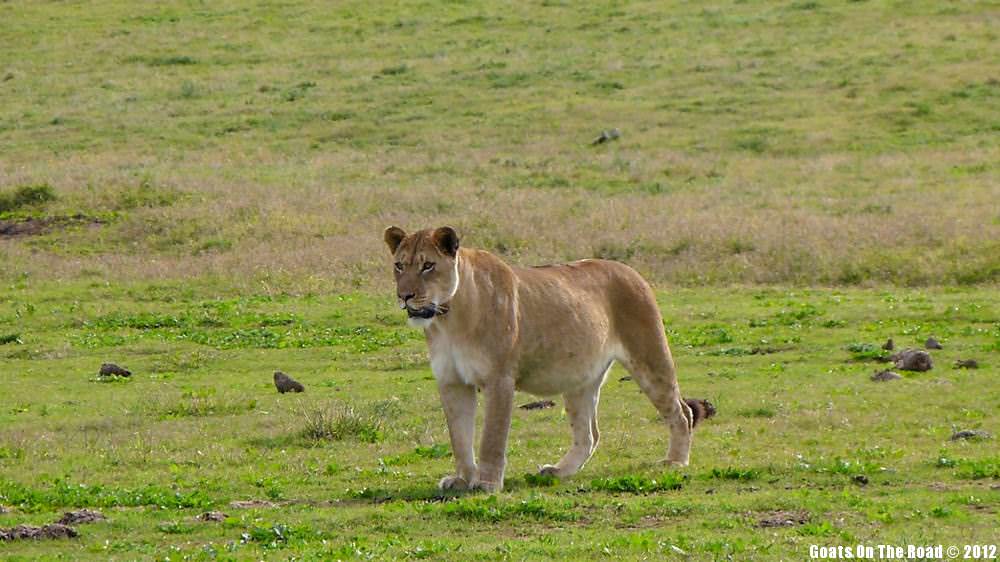
That’s our Photo Safari and we hope you enjoyed it. Visiting Africa is incredible for so many different reasons, the culture, the tribes, the beaches, the history, the architecture and the colors, but for sure one of the main reasons that travellers make their way to the continent is to spot some amazing wildlife. We were lucky enough to spot the big 5 and much more. If you’re looking for info on safaris, national parks and African travel in general, please check out our bio below!
Authors Bio:

Nick & Dariece have left everything behind in search of cultural experiences, beautiful beaches and off the beaten path adventures. They call themselves Goats On The Road and their website for budget backpackers encourages others to pack their bags and leave the ordinary behind. Visit Goats On The Road and get excellent tips for the adventurous budget backpacker! You can also follow along on their adventures on Facebook & Twitter.
____________________________________________________________________________________
Where Are The Top Places For Safari In Africa?
Here are some of the top places for safari in Africa:
1. Serengeti National Park, Tanzania
The Serengeti is perhaps the most iconic safari destination in Africa. It’s famous for the Great Migration, where millions of wildebeest, zebras, and gazelles move across the plains in search of fresh grazing. The sheer scale of wildlife here is breathtaking, with opportunities to see the Big Five—lion, leopard, elephant, buffalo, and rhino. The vast, open landscapes and stunning sunsets make every moment unforgettable.
- Unique Experience: Witnessing the Great Migration is a once-in-a-lifetime event that embodies the raw beauty of nature.
2. Maasai Mara National Reserve, Kenya
Adjacent to the Serengeti, the Maasai Mara offers another prime spot for witnessing the Great Migration. The reserve is also renowned for its large populations of big cats, including lions, cheetahs, and leopards. The Maasai Mara is smaller than the Serengeti, which often means wildlife sightings are more concentrated and accessible.
- Cultural Connection: The reserve is home to the Maasai people, offering visitors the chance to engage with their rich cultural heritage.

3. Kruger National Park, South Africa
Kruger is one of Africa’s largest and most diverse national parks. It’s incredibly well-managed, with a wide range of accommodations, from basic campsites to luxury lodges. Kruger is home to an abundance of wildlife, including the Big Five, and offers excellent self-drive safari opportunities.
- Accessibility and Comfort: Kruger’s infrastructure makes it ideal for both first-time safari-goers and seasoned travelers looking for convenience and variety.
4. Okavango Delta, Botswana
The Okavango Delta is a unique safari destination, offering water-based safaris in addition to traditional game drives. The delta’s labyrinth of waterways and islands is a haven for a wide variety of wildlife, including elephants, hippos, and an array of bird species. The Okavango’s lush, water-rich environment contrasts with the arid landscapes typically associated with African safaris.
- Unique Ecosystem: Exploring the Okavango by mokoro (dugout canoe) provides a peaceful and intimate wildlife experience that’s different from anywhere else.
5. Etosha National Park, Namibia
Etosha is known for its vast salt pan that can be seen from space. The park’s landscape is stark and striking, offering unique photographic opportunities. Wildlife congregates around waterholes, making for easy and frequent sightings of elephants, lions, giraffes, and more. The dry, open terrain also makes it easier to spot animals from a distance.
- Waterhole Safaris: Watching the diverse wildlife gather around Etosha’s waterholes, especially in the dry season, offers some of the most reliable and rewarding game viewing in Africa.
6. Ngorongoro Crater, Tanzania
The Ngorongoro Crater is the world’s largest inactive volcanic caldera and a UNESCO World Heritage site. Its enclosed ecosystem supports a dense population of wildlife, including the Big Five. The crater’s unique geography ensures that wildlife is concentrated and easier to spot, making it one of the best places for a day safari.
- Scenic Beauty: The crater’s lush, green floor contrasts with its towering walls, creating a stunning backdrop for wildlife photography.
7. Hwange National Park, Zimbabwe
Hwange National Park is Zimbabwe’s largest game reserve and a hidden gem for safari enthusiasts. Known for its massive elephant herds, the park is home to over 40,000 elephants, along with lions, cheetahs, leopards, and a variety of antelope species. The park’s diverse habitats range from woodlands to savannah, providing excellent opportunities for game viewing. Unlike some more popular parks, Hwange offers a more remote and tranquil safari experience.
- Elephant Haven: Hwange’s vast elephant population is one of its most remarkable features, offering visitors close encounters with these majestic creatures in a serene setting.
8. Chobe National Park, Botswana
Chobe National Park, located in northern Botswana, is famous for its large elephant population and diverse ecosystems. The park’s Chobe Riverfront is a prime location for game viewing, where visitors can see elephants, buffalo, and hippos along the water’s edge. Boat safaris on the Chobe River offer a unique perspective, allowing you to observe wildlife from the water.
- River Safaris: The combination of land and water safaris in Chobe provides a dynamic and multifaceted experience, where you can watch elephants bathing or spot crocodiles lurking in the water.
9. South Luangwa National Park, Zambia
South Luangwa National Park is often referred to as one of Africa’s best-kept secrets. Known for its walking safaris, South Luangwa offers an intimate and immersive experience where visitors can explore the bush on foot with experienced guides. The park is also home to a high density of leopards, making it one of the best places to see these elusive big cats.
- Walking Safaris: South Luangwa pioneered walking safaris, providing an unparalleled way to connect with the African wilderness, as you track wildlife and learn about the ecosystem up close.
10. Amboseli National Park, Kenya
Amboseli National Park, located in southern Kenya, is renowned for its stunning views of Mount Kilimanjaro and its large herds of elephants. The park’s flat plains make wildlife easy to spot, and the dramatic backdrop of Africa’s highest peak adds to the park’s allure. Amboseli is also home to a variety of bird species, making it a haven for birdwatchers.
- Iconic Views: The sight of elephants crossing the savannah with Mount Kilimanjaro in the background is one of Africa’s most iconic images, making Amboseli a unique and picturesque safari destination.

How To Take Incredible Safari Photos While Visiting Africa
Understand Your Equipment
Before heading out on your safari, familiarize yourself with your camera’s settings. Whether you’re using a DSLR, mirrorless camera, or even a smartphone, understanding how to adjust the ISO, shutter speed, and aperture will help you capture stunning images. Practice shooting in different lighting conditions and experiment with the zoom to ensure you’re prepared for the varying distances and light you’ll encounter on a safari.
- Lens Choice: A telephoto lens (200-400mm) is ideal for capturing distant wildlife, while a wide-angle lens is perfect for landscapes and group shots.
Timing is Everything
The best light for photography, especially on a safari, is during the golden hours—just after sunrise and just before sunset. The soft, warm light during these times adds depth and richness to your photos, enhancing the natural beauty of the landscape and the animals.
- Early Morning and Late Afternoon: Wildlife is often more active during these times, increasing your chances of capturing dynamic shots of animals in action.
Composition and Patience
Pay attention to the composition of your shots. Use the rule of thirds to create balanced images, and try to include elements like trees, water, or the horizon to give context to your photos. Patience is key; sometimes the best shots come from waiting quietly for the perfect moment.
- Anticipate Movement: Watch the animals’ behavior and anticipate their movements. This will help you capture those dramatic moments, like a lioness on the hunt or an elephant at the waterhole.
Focus on the Details
Don’t just concentrate on the big picture—look for interesting details as well. Close-up shots of an animal’s eyes, the texture of their skin, or the interplay of light and shadow on the landscape can result in powerful, evocative images.
- Depth of Field: Experiment with depth of field by adjusting your aperture. A shallow depth of field can make the subject stand out against a blurred background, creating a striking focal point.
Why Safari Photography is Unique
Taking photos on a safari is a unique experience because it combines the thrill of wildlife observation with the challenge of capturing fleeting, once-in-a-lifetime moments. Unlike a controlled environment, you’re dealing with wild animals in their natural habitat, which requires quick thinking, adaptability, and a deep connection to the environment. The unpredictability of a safari makes each photo an achievement, a testament to your patience, skill, and timing.
Final Thoughts: Capturing the Essence of the Wild
Safari photography is not just about getting a perfect shot—it’s about capturing the essence of the wild. The raw power of a lion, the gentle grace of a giraffe, the vastness of the African plains—each photo tells a story. With the right preparation, patience, and a bit of luck, you’ll return home with incredible images that not only document your adventure but also evoke the beauty and majesty of Africa’s wildlife.

Travel Tips For Having A Memorable Safari in Africa
Choose the Right Time of Year
Timing your safari can make a big difference in your experience. The dry season, typically from June to October, is the best time for wildlife viewing as animals gather around water sources, making them easier to spot. However, the wet season brings lush landscapes and fewer crowds, offering a more intimate experience.
- Best Seasons: Research the specific destination as the best time for safari can vary across Africa. For example, the Great Migration in the Serengeti is best seen from June to September.
Pack Smart
Packing the right gear is crucial for a successful safari. Lightweight, breathable clothing in neutral colors is ideal for blending into the surroundings and staying comfortable in the heat. Don’t forget a wide-brimmed hat, sunglasses, and high-SPF sunscreen to protect against the intense African sun. A good pair of binoculars and a camera with a zoom lens are must-haves for capturing distant wildlife.
- Essentials: In addition to clothing and photography gear, bring insect repellent, a first-aid kit, and any necessary medications, as you might be far from medical facilities.
Embrace the Early Starts
Safaris often begin at dawn when the animals are most active. While waking up before sunrise might not be everyone’s idea of fun, these early morning game drives offer the best opportunities to see predators like lions and leopards on the move. Plus, the soft morning light is perfect for photography.
- Golden Hours: Early mornings and late afternoons are prime times for wildlife activity and the best lighting for capturing stunning photos.
Listen to Your Guide
Your safari guide is an invaluable resource. They have extensive knowledge of the local wildlife, ecosystems, and behaviors, which will enhance your experience. Follow their instructions, respect their expertise, and ask questions—guides are often more than happy to share their insights.
- Safety First: Always follow your guide’s advice, especially when it comes to safety. Remember, you’re in a wild environment where animals have the right of way.
Stay Present and Enjoy the Moment
While capturing photos is important, don’t forget to put down the camera and simply enjoy the experience. Take in the sounds, the smells, and the sheer beauty of the African wilderness. A safari is not just about ticking off the Big Five; it’s about connecting with nature and appreciating the small moments, like watching a herd of elephants bathe or listening to the calls of birds at sunrise.
- Mindful Travel: Being fully present allows you to experience the magic of a safari on a deeper level. Savor the moments that don’t make it into photos, as these are often the most memorable.
A safari in Africa is an adventure that stays with you forever. By preparing well, embracing the early starts, and being open to every experience, you’ll create memories that last a lifetime. Whether it’s your first safari or your tenth, the magic of Africa’s wilderness never fades.
Planning Your First African Safari (Without Losing Your Mind Or Your Budget)
The photos are the hook, but at some point you have to move from “wow, lions!” to “okay, how do I actually do this?”
Safaris look intimidating from the outside – big price tags, confusing choices, and a whole continent’s worth of national parks. The good news is you don’t need to be on honeymoon or have a trust fund to make it happen. You just need a rough plan, a realistic budget, and a style of safari that fits who you are as a traveller.
Let’s turn the photo dream into an actual trip.
Where In Africa Should You Go On Safari?
You can go on safari in a lot more places than people realize, but most first-timers end up choosing between East Africa and Southern Africa.
Here’s a quick snapshot to help you get your bearings:
| Region | Countries (Typical) | Vibe & Highlights | Good For |
|---|---|---|---|
| East Africa | Kenya, Tanzania | Big skies, migration, endless plains, Maasai culture | “Classic” first safari, big cats |
| Southern Africa | South Africa, Botswana, Namibia, Zimbabwe, Zambia | Self-drive options, varied landscapes, great infrastructure | Mix of safari + cities/road trips |
| Great Lakes / Forest | Uganda, Rwanda | Gorillas, chimps, lush forests, fewer crowds | Primates + shorter savannah safaris |
You can’t go wrong with any of these, but they feel very different.
If you’re dreaming of those BBC documentary shots of golden grass and lions on termite mounds, East Africa is probably what’s playing in your head. If you like the idea of driving yourself, combining safari with wine regions, canyons, or the coast, Southern Africa is your playground.
Choosing Your Safari Style
Before you even pick a specific park, it helps to decide how you want to travel. Your style affects everything: budget, comfort level, and what your days actually look like.
Accommodation & Experience: What Fits You?
| Style | What It Looks Like | Pros | Cons |
|---|---|---|---|
| Budget Camping | Dome tents, basic ablutions, group cooking or simple meals | Cheap, social, feels adventurous | Early starts + long days, less privacy |
| Tented Camp (Mid) | Permanent tents with beds, ensuite or shared bathrooms | Close to nature, comfy, good value | Can still be pricey in top parks |
| Lodge (Mid–High) | Rooms or chalets, pools, bars, full board | Very comfortable, easy logistics | Higher cost, sometimes less “wild” feel |
| Luxury Safari Lodge | Fine dining, plunge pools, all-inclusive game drives | Incredible guiding, comfort, wildlife access | Expensive, can feel like a bubble |
Think about:
- How much heat, dust, and cold showers you’re willing to tolerate.
- Whether you need your own bathroom or you’re okay with shared facilities.
- If you prefer social group dinners or more privacy and quiet.
How You Move: Guided vs Self-Drive
| Option | Best In… | Why You Might Love It | Why You Might Not |
|---|---|---|---|
| Group Tour | Kenya, Tanzania, Botswana | Easy, social, everything handled | Fixed schedule, mixed group dynamics |
| Private Driver | East + Southern Africa | Flexible, custom pace, great for couples/friends | More expensive than group trips |
| Self-Drive | South Africa, Namibia | Maximum freedom, cheaper for families/groups | Navigation, park rules, driving fatigue |
| Fly-In Safari | Botswana, remote Tanzania | Access remote camps, stunning aerial views | Costly, less spontaneous |
If it’s your first time in Africa and you want to focus on the experience instead of road rules, a guided option – group or private – is usually the easiest way in. Once you get a feel for things, self-drive starts to look very tempting.
Sample Safari Itineraries (You Can Actually Build Around)
You can happily blow a month bouncing between parks, but most of us are working with one to two weeks. Here are a few real-world itineraries to give you a sense of how things can fit together.
1) Classic 7-Day East Africa Safari (Big Cats & Big Skies)
This is for you if you want the “movie version” of Africa: endless plains, big herds, and lions under acacia trees.
Day 1–2: Arrival + First Park
- Land in Nairobi or Arusha.
- Overnight to shake off jet lag.
- Drive to your first park (e.g. Tarangire or Lake Nakuru) for elephants, flamingos, or rhinos.
- Afternoon game drive and early night.
Day 3–5: Main Event – Serengeti Or Maasai Mara
- Long drive or flight into the heart of the plains.
- Two to three full days of game drives: sunrise starts, midday siesta, late afternoon drives.
- If timing lines up, position yourself near migration crossings or big herds.
Day 6: Ngorongoro Crater Or Additional Mara Day
- Drop down into Ngorongoro Crater for dense wildlife and epic views, or add a final day in the Mara/Serengeti for one last shot at elusive cats.
Day 7: Return & Departure
- Easy drive back to Arusha/Nairobi.
- Souvenir run and flight out, or onward to the coast.
You can bolt a few beach days in Zanzibar, Diani, or Lamu onto this if you’ve got extra time and budget.
2) 10-Day Southern Africa Combo (Self-Drive + Guided)
If you like a bit of independence and the idea of mixing city, coast, and safari, Southern Africa is brilliant.
Day 1–2: Johannesburg Or Cape Town
- Arrive, settle into a guesthouse, adjust to the time zone.
- Explore neighbourhoods, markets, and local food.
Day 3–5: Kruger National Park (Or Nearby Private Reserve)
- Fly or drive to Kruger region.
- Either:
- Rent a car and stay at SANParks rest camps (self-drive)
- Or base at a private lodge with guided drives.
- Early morning and late afternoon game drives, siestas in between.
Day 6–7: Panoramic Route Or Victoria Falls
- Road trip the Panorama Route (Blyde River Canyon, viewpoints, waterfalls) or
- Fly to Victoria Falls for a couple of days of viewpoints, markets, and optional adrenaline activities.
Day 8–10: Chobe Or Second Safari Stop
- If you made it to Vic Falls, hop over to Chobe for a mix of river cruises and game drives.
- Otherwise, add a second section of Kruger or a different South African park (Hluhluwe–Imfolozi, Addo, etc.).
This kind of trip gives you a little bit of everything: lions and elephants, big scenery, and a few days that aren’t just bumping along in a vehicle.
3) Short & Sweet 5-Day Kruger Escape
Sometimes all you have is a week off and a burning need to see elephants. That’s okay.
Day 1: Fly into Johannesburg, overnight near the airport or in a nearby suburb.
Day 2: Drive or shuttle to Kruger (or fly to a regional airport and get a transfer). Afternoon game drive.
Day 3–4: Full safari days – morning and afternoon drives, downtime at the pool or overlooking a waterhole.
Day 5: Final sunrise drive, breakfast, and travel back to Joburg for your evening flight out.
You won’t see the entire park, and that’s okay. Quality beats quantity with safaris.
What A Safari Really Costs (Ballpark Numbers)
The most intimidating thing about safaris is often the price tag. It can be expensive, but there are more options than just $800-a-night lodges.
Here’s a rough, per-person daily breakdown (excluding international flights), in USD:
| Budget Level | Approx. Daily Spend | What This Typically Includes |
|---|---|---|
| Shoestring | $100–$200 | Camping, group tour, simple meals, park fees, transport |
| Midrange | $200–$450 | Guesthouse/tented camp, guided drives, most meals, fees |
| Comfortable Plus | $450–$800 | Quality lodges, smaller groups, drinks, laundry, fees |
| High-End | $800+ | Luxury lodges, all-inclusive, flights between camps |
A few important details hiding behind those numbers:
- Park fees add up quickly. Budget camps inside parks can still be pricey purely because of conservation fees.
- Transport matters. Flying between camps saves time but eats budget. Overland tours are slower but cheaper.
- Single travellers often pay a single supplement, especially in lodges. If you can share a room, you save.
- Self-drive can be very cost-effective in places like Kruger or Etosha if you’re a couple, family, or small group.
If you’re on a tight budget, you’ll often get more wildlife for your money by:
- Doing a shorter safari but in a top park.
- Combining self-drive days with one or two guided activities.
- Travelling in the shoulder season instead of Christmas or peak migration dates.
Practical Logistics That Make A Huge Difference
The wildlife is the glamorous part. The logistics are the bit that decide whether you’re relaxed with a cold drink at sunset… or hunting for an ATM that actually works.
Getting Around
- Domestic flights are common between major hubs and safari gateways. They save time but add cost, especially when you’re carrying camera gear.
- Overland trucks and group tours usually handle everything for you: tents, park fees, meals. Great if you like social travel and don’t want to plan every detail.
- Car rentals are straightforward in South Africa and Namibia. Pay attention to mileage limits, insurance, and whether the car is suitable for gravel roads.
Health & Documents
- Check whether your route crosses any yellow fever certificate requirements (especially if you’re transiting certain countries).
- Many popular parks are in malaria zones. That means thinking about prophylaxis, long sleeves in the evening, and repellent.
- Make sure your passport has enough blank pages and at least six months’ validity beyond your travel dates.
None of this is glamorous, but it’s far more fun to deal with it at home than in a dusty border town.
What It’s Actually Like Inside the Park
If you’ve never been on safari, the daily rhythm might surprise you.
Typical Safari Day
- 05:00–05:30 – Wake-up knock, coffee and rusks by the fire.
- 06:00–09:00 – Morning game drive while predators are still active.
- 09:30–11:00 – Big breakfast, shower, maybe a quick nap.
- 11:00–15:00 – Downtime: read, download photos, dip in the pool, or a short walk if you’re in a safe area.
- 15:30–18:30 – Afternoon game drive, sundowners in the bush.
- 19:30–21:00 – Dinner, stories around the fire, early night.
It’s not a lie-in sort of holiday. You’ll be in bed embarrassingly early and still be tired, but it’s the good kind of tired – the “I saw cheetahs today” kind.
Staying Inside vs Outside the Park
| Base Type | Pros | Cons |
|---|---|---|
| Inside the Park | Closer to wildlife, first on scene in the morning, more animal sounds at night | Costlier, limited Wi-Fi, stricter rules |
| Outside the Park | More accommodation choice, lower prices, better Wi-Fi and shops | Longer drives to the gate each day |
If your budget allows, spending at least a couple of nights inside a park or private reserve is worth it for the tingle of hearing lions at night alone.
Responsible & Respectful Safari Choices
It’s easy to get lost in the animal excitement and forget that you’re walking into delicate ecosystems and real communities, not a theme park.
A few simple guidelines go a long way:
- Keep your distance. If your guide is edging too close for a good photo and it feels wrong, say something. No shot is worth stressing an animal.
- Stay in the vehicle. Unless your guide tells you it’s safe to step out in specific spots, stay inside. You’re much less threatening – and safer – that way.
- Avoid feeding animals. Monkeys, baboons, and even birds become aggressive when they associate humans with food. It usually ends badly for the animal.
- Listen to local voices. When people talk about human-wildlife conflict, take it seriously. Elephants and lions are magical from the safety of a Land Cruiser; they’re something else when they’re raiding crops or threatening livestock.
- Support conservation-minded operators. Look for camps and lodges that hire locally, invest in conservation, and are transparent about where your money goes.
Safaris are powerful experiences partly because you feel small in the best possible way. Respecting the place that gives you that feeling is part of the deal.
Packing For Safari: The Realistic Version
You don’t need a full khaki wardrobe and a hat that makes you look like an extra from an old movie. You do need practical clothes that can handle dust, sun, and temperature swings.
Clothing
- Neutral-coloured T-shirts and long-sleeve shirts
- Light trousers or hiking pants (zip-offs are handy)
- A warm layer – fleece or lightweight down jacket for cold mornings
- One set of clothes you don’t mind getting very dusty
- A bandana or buff (doubles as dust mask and sweat-wiper)
Essentials You’ll Be Grateful For
- Decent binoculars – you’ll use them constantly, not just for big animals.
- A headlamp for camp and early mornings.
- Spare memory cards and a backup drive for photos.
- Earplugs if you’re a light sleeper; the bush orchestra is loud.
- A small daypack for drives: camera, water, sunscreen, snacks.
Safari packing is really about layers and comfort. If it pinches, rubs, or feels slightly annoying at home, it will drive you mad after ten bumpy game drives.
Africa Safari Questions Answered: Planning, Wildlife, Costs, Safety & Photo Tips
When is the best time of year to go on safari in Africa for wildlife viewing?
It depends. In general, the dry season is best for classic big-game viewing because vegetation is lower and animals cluster around waterholes. In much of East Africa (Kenya, Tanzania), that usually means roughly June to October, with the Great Migration timing shifting slightly each year. In Southern Africa (South Africa, Namibia, Botswana, Zimbabwe, Zambia), the core safari months are often May to October, with cooler nights and warm, sunny days. The wetter “green season” can be cheaper and much quieter, with lush landscapes and babies everywhere, but animals are more spread out and some areas may be harder to access.
How many days do I really need for my first African safari?
Honestly, more than you think. A short five-day trip can give you a great taste of one main park, especially somewhere like Kruger or the Maasai Mara. If you can stretch to seven to ten days, you’ll have time to slow down, change camps once or twice, and experience different habitats instead of racing around. Remember you also lose time to travel days at the start and end, so try to give yourself at least three or four full safari days on the ground.
Which country is best for a first-time safari in Africa?
It depends. Kenya and Tanzania are fantastic if you’re dreaming of huge herds, big cats, and those classic endless plains you see in documentaries. South Africa is brilliant for first-timers who like good roads, lots of accommodation choice, and the option of self-drive, city breaks, and coast in the same trip. Namibia, Botswana, Zambia, and Zimbabwe are amazing too, but often suit people who have a bit more time, budget, or a taste for wilder, less-developed parks.
How much does an African safari cost and can I do it on a budget?
Absolutely. You can spend anything from around a hundred US dollars a day on a basic overland camping safari to many hundreds (or thousands) per day at luxury lodges. Budget options usually mean simple tents, shared ablutions, group travel, and long driving days, while midrange and high-end trips include more comfort, fewer people per vehicle, and better-located camps. The big cost drivers are park fees, accommodation, and transport between parks. A smart way to save is to pick one or two excellent parks, travel in shoulder season, and combine a few guided days with cheaper self-drive or independent time before or after.
Is it safe to go on safari in Africa right now?
Usually. The safari bubble itself is one of the safer travel experiences you can have because you’re with professional guides, in regulated parks, and often inside private reserves with controlled access. The bigger safety questions tend to be around the cities you pass through, road travel, and basic common-sense things like not walking around with expensive gear on display at night. Inside the parks, the main rule is listening to your guide: stay in the vehicle unless told otherwise, don’t lean too far out, and never treat wild animals like zoo exhibits. If you check current travel advisories, choose reputable operators, and follow camp rules, safaris are far less scary than they look from a distance.
Do I need vaccinations or malaria tablets for an African safari?
Probably. Many top safari areas sit inside malaria zones, so most travelers at least consider antimalarial tablets plus long sleeves and repellent in the evenings. Depending on your route and passport, you may also need or be asked for certain vaccines, like yellow fever, especially if you’re transiting through particular countries. The details change over time, so this is one area where I always recommend talking to a travel clinic or doctor well before you fly. Bring printed proof of any required vaccines and keep your meds in their original packaging in your hand luggage.
What is the difference between a national park and a private game reserve?
National parks are usually public, government-managed areas with set rules, public roads, and a wide range of places to stay, from simple camps to fancy lodges. Private reserves are pieces of land next to or within greater conservation areas that are run privately and often share unfenced borders with national parks. In a private reserve your guide can usually leave the main tracks, do night drives, and track animals more freely, and vehicles radio each other about sightings, which can mean incredible encounters. The trade-off is price: private reserves are typically more expensive but can feel more exclusive and immersive.
Should I book a group tour, a private safari, or go self-drive?
All three work, but they suit different personalities. Group tours are great if you’re on a tighter budget, traveling solo, or don’t want to handle any logistics; you swap flexibility for ease and a social vibe. Private safaris cost more per person but give you a driver-guide, vehicle, and schedule tailored to you, which is brilliant for families, photographers, or anyone with specific interests. Self-drive really shines in places like South Africa and Namibia, where roads and infrastructure are good, but you need to be comfortable with driving rules, park regulations, and doing your own planning.
Is an African safari suitable for kids and families?
Yes. Many parks and lodges welcome families, and a safari can be a ridiculously memorable trip with kids, especially once they are old enough to follow instructions and sit still in a vehicle. Some lodges have minimum age limits for game drives or walking safaris, so you need to check the fine print when you book. Family-friendly places may offer shorter drives, kid-focused activities, and larger family rooms or tents. Just be realistic about early starts, downtime between drives, and how much heat, dust, and sitting your kids will actually enjoy.
What should I pack and what colors should I wear on safari?
Think neutral, breathable, and practical. Lightweight trousers, T-shirts or long-sleeve shirts in greens, browns, and khakis work better than bright whites or neons, which can stand out in the bush and show dust instantly. Early mornings and evenings can be surprisingly cold, so pack a warm layer and maybe a beanie, along with a wide-brimmed hat, sunglasses, and high-SPF sunscreen for midday. Closed shoes, a small daypack, a refillable water bottle, insect repellent, and any prescription meds you need are more important than looking like an extra in a movie.
Do I really need a big zoom lens for safari photos or is a phone enough?
Not really. A good zoom lens definitely helps for tight wildlife shots, especially of smaller or more distant animals, and serious photographers will still want at least a mid-range telephoto. But phones and compact cameras are miles better than they used to be, and you can capture a lot of magic with wider shots, silhouettes, and scenes at the waterhole. If you are into photography and can stretch to it, something in the 200–400mm range is fantastic, but I have also met travelers who came home with beautiful safari albums shot entirely on phones. What matters most is how you see, not just what you shoot with.
How can I take better wildlife photos on safari if I am a complete beginner?
Relax. Start by keeping your shutter speed high enough to freeze movement, even if that means bumping up your ISO a bit; blurry lions are not very majestic. Focus on the eyes when you can, leave a bit of space in front of moving animals in the frame, and use the rule of thirds so the subject is not always dead center. Don’t forget to tell the wider story: landscapes, vehicles, tracks, your campfire, and little details like horns, paws, and tails all add variety. And most importantly, put the camera down regularly so you’re actually present for the moment, not just chasing the “perfect” shot.
What etiquette rules should I follow on game drives so I do not annoy my guide or other guests?
The basics go a long way. Keep your voice low at sightings, especially around skittish animals, and avoid sudden movements that might spook wildlife or block someone else’s view. Ask your guide before standing up, switching seats, or dangling camera gear outside the vehicle, and never whistle, clap, or throw anything to get an animal’s attention. If you are in a shared vehicle, be mindful about how long you stay at a sighting, and remember that not everyone is chasing the same checklist as you. A bit of patience and respect makes the experience better for everyone on board.
How far in advance should I book my safari, and can I plan a last-minute trip?
It depends. For peak times like major school holidays, the Great Migration, or prime dry-season months in popular parks, booking six to twelve months ahead is very sensible, especially for specific lodges or private reserves. If you are flexible on dates, parks, and budget level, you can absolutely find last-minute options, particularly in shoulder seasons and in bigger parks with lots of accommodation. Flights are usually the piece that gets painful closer to departure, so locking those in early and leaving some wiggle room on the ground can be a good compromise. Either way, once you start planning, move on key pieces quickly rather than window-shopping forever.
Are African safaris accessible for travelers with limited mobility or health concerns?
More than you might think, but it needs planning. Some lodges and camps now have accessible rooms, ramps, and vehicles that can accommodate travelers with reduced mobility, while others are very much built around steps, sand, and uneven walkways. If you have specific needs, it is worth working with an operator who has experience arranging accessible safaris and can be honest about what is realistic in each park. Shorter drives, private vehicles, and choosing camps with good medical access all help. The same goes for chronic health conditions: talk to your doctor in advance, bring extra medication, and build your itinerary around realistic energy levels, not just what looks exciting on a map.
Can I combine a safari with a beach or city break in the same Africa trip?
Absolutely. One of the best things about safari travel is how easily you can bolt on a completely different vibe at either end of the trip. Classic combos include Kenya or Tanzania with a few lazy days in Zanzibar, South Africa with Cape Town and the Garden Route, or Victoria Falls plus time in Chobe or the Okavango. If you are coming a long way, it often makes sense to add at least three or four “soft” days somewhere coastal or in a fun city so you don’t go straight from dawn game drives back to your desk. It also helps your budget to mix high-cost safari nights with a few cheaper days before flying home.
Making The Most Of Your Time In The Bush
The temptation on safari is to chase sightings like a checklist. Big Five, tick. Cheetah, tick. Hyena, tick.
The most memorable moments, though, are often the small, quiet ones:
- Watching a herd of impala freeze and stare at something you can’t see.
- Hearing hippos grunting below your tent at night.
- Sitting with a pride of lions doing absolutely nothing for an hour… and realizing you’re okay with that.
If you can, build a little unstructured time into your trip. Stay an extra night in one camp. Spend an afternoon just watching a single waterhole. Put the camera down every now and then and just listen.
Africa doesn’t rush. The animals certainly don’t. If you let the pace slow you down a bit, the whole experience sinks deeper under your skin – long after the last photo has been edited and posted.

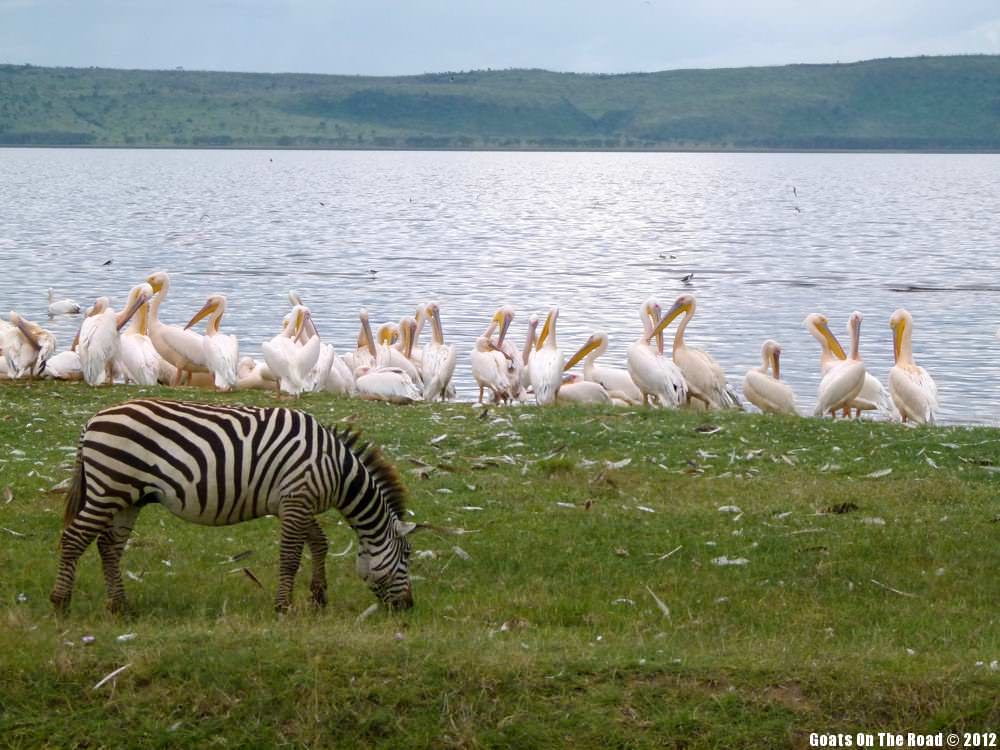
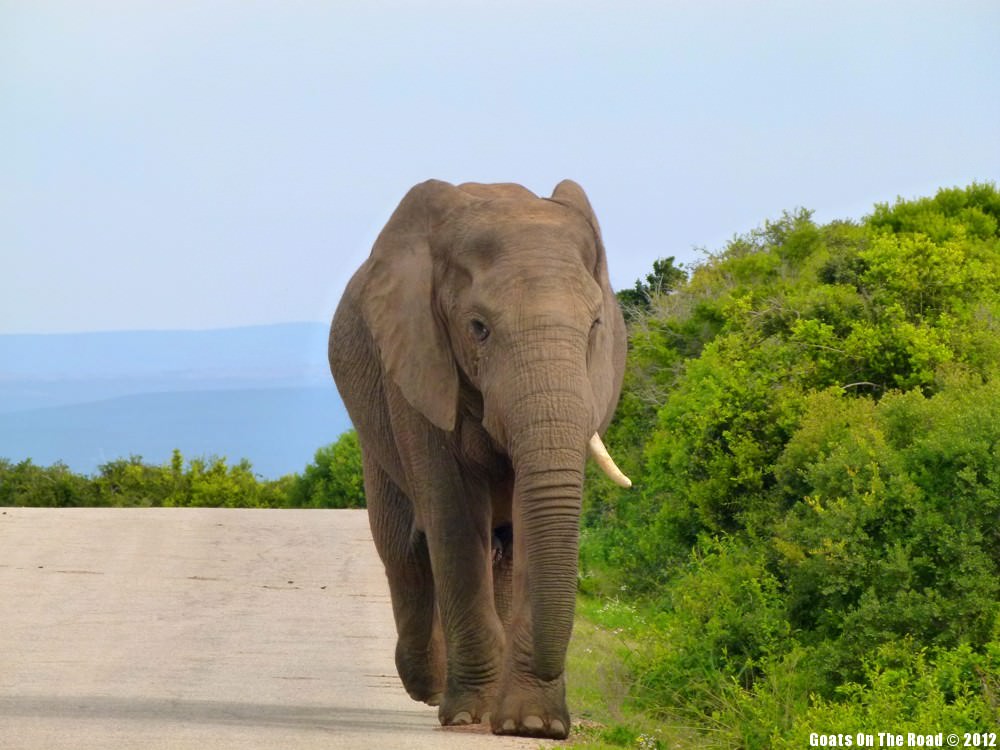

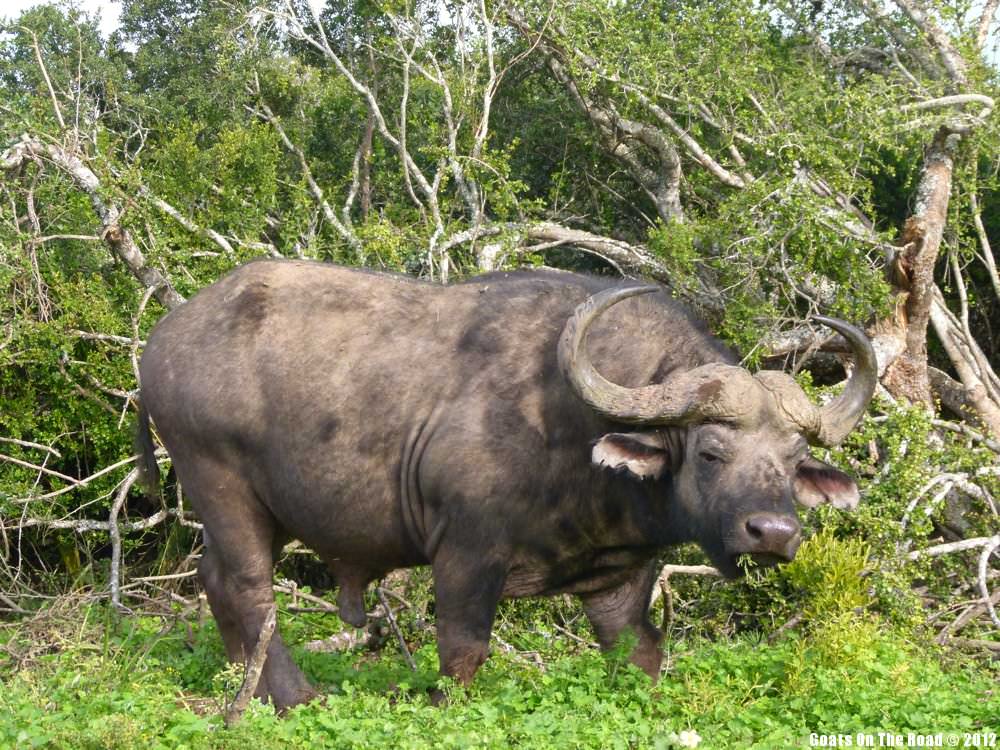
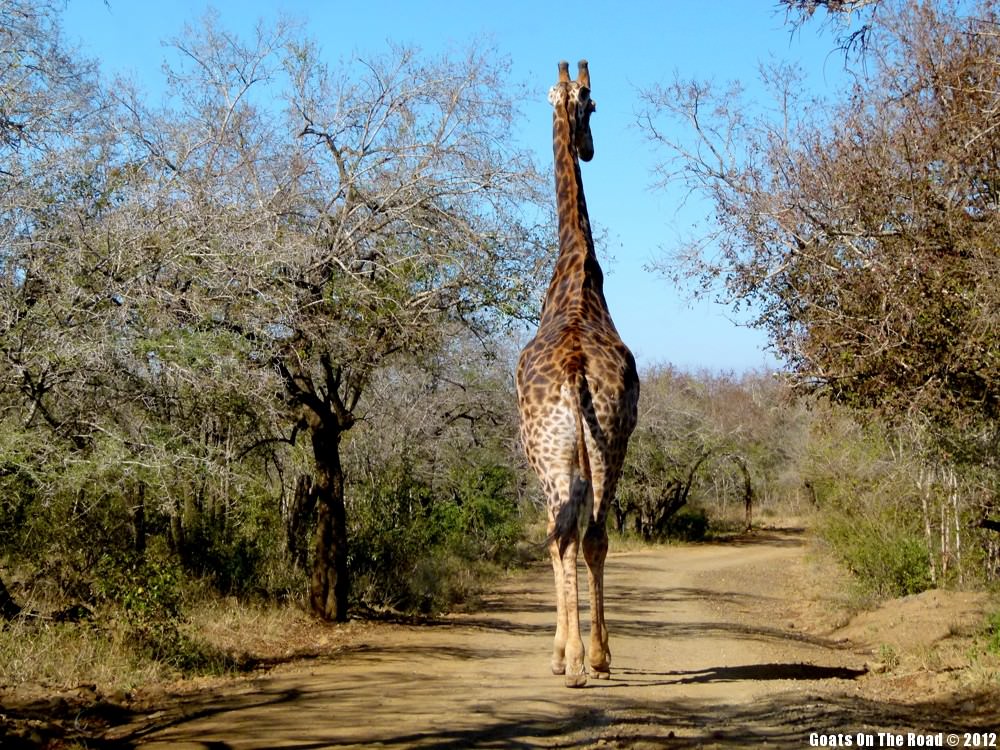
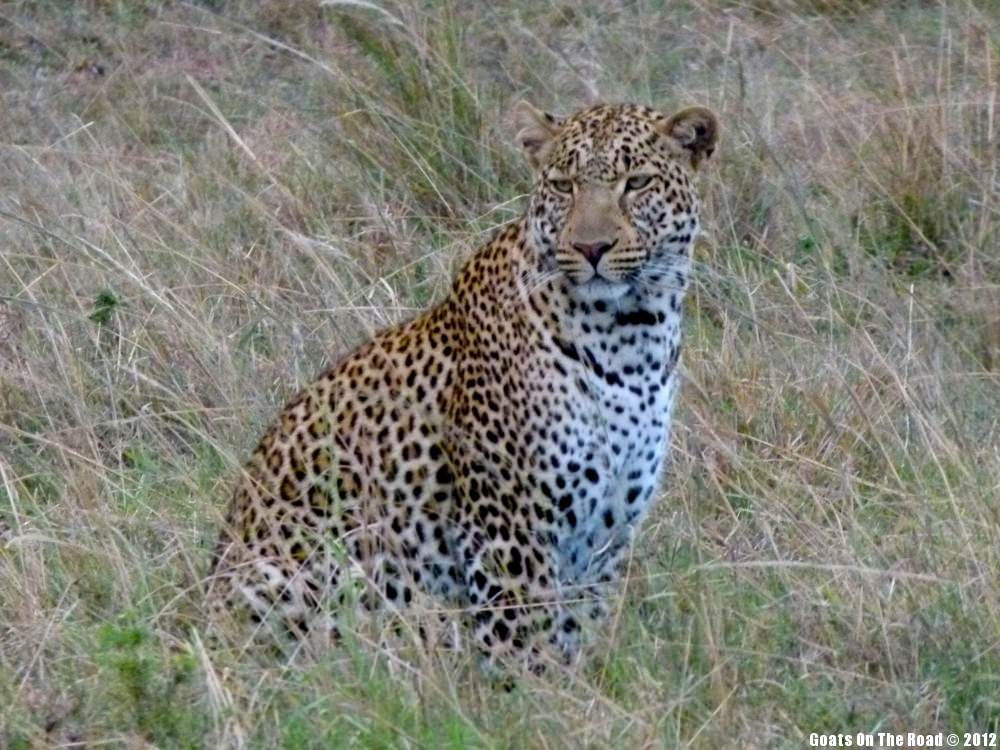
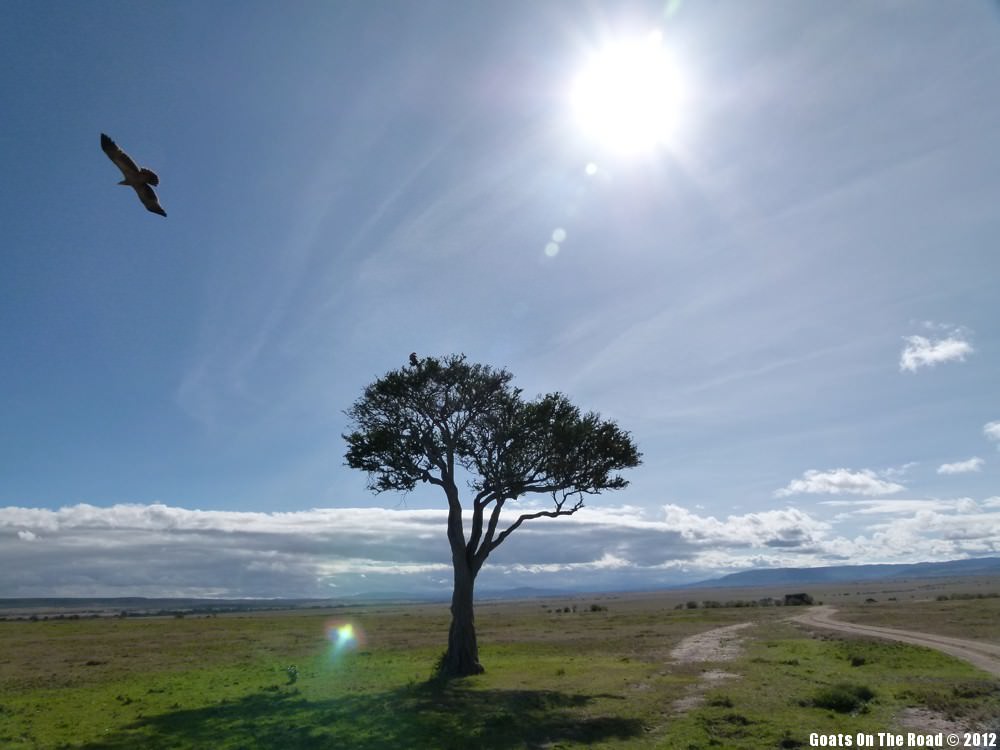
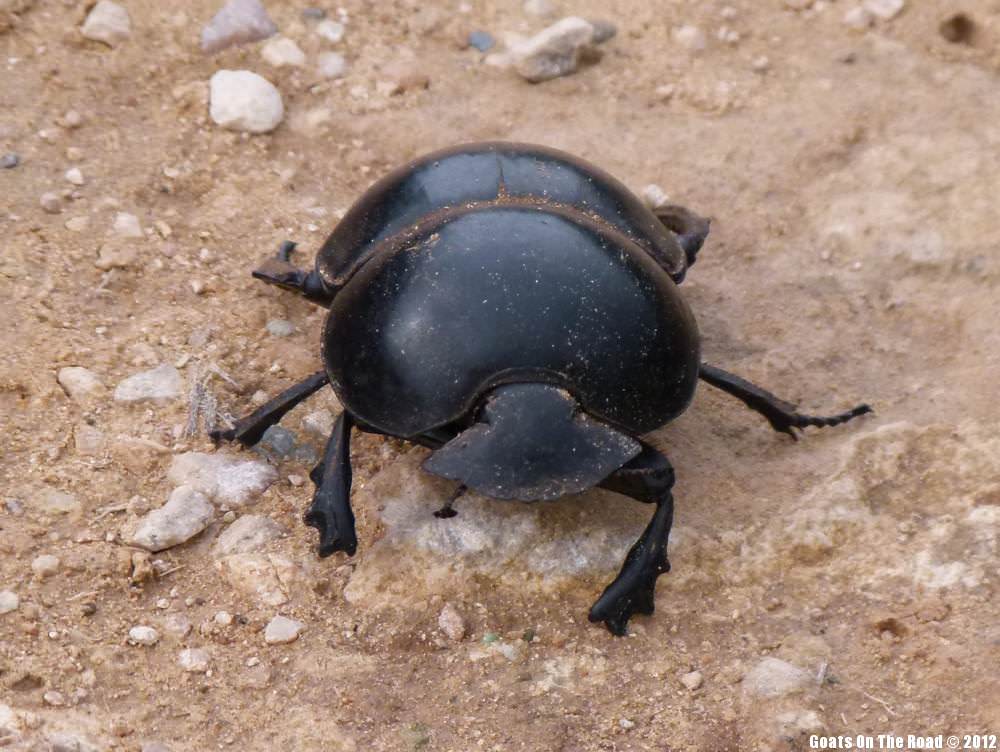






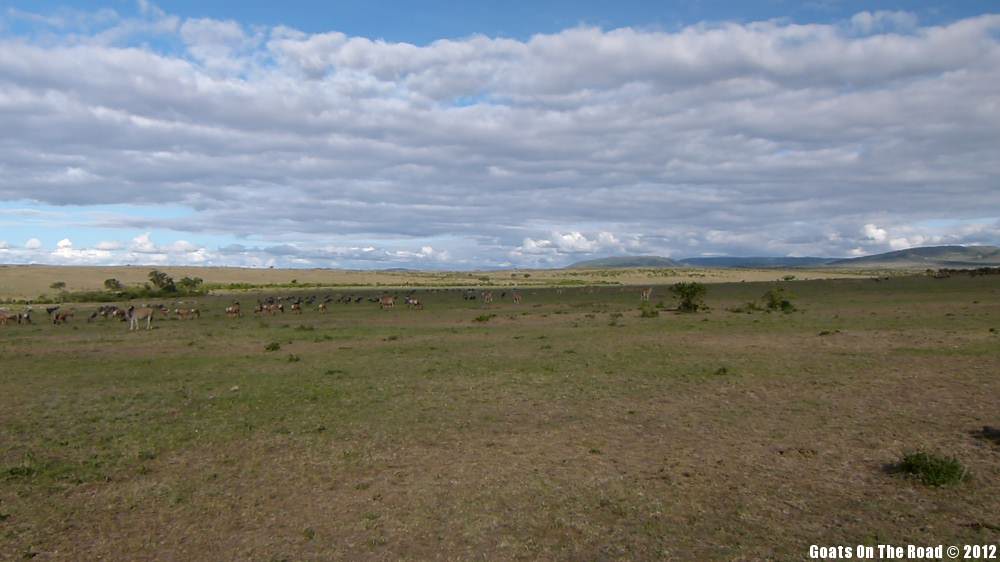



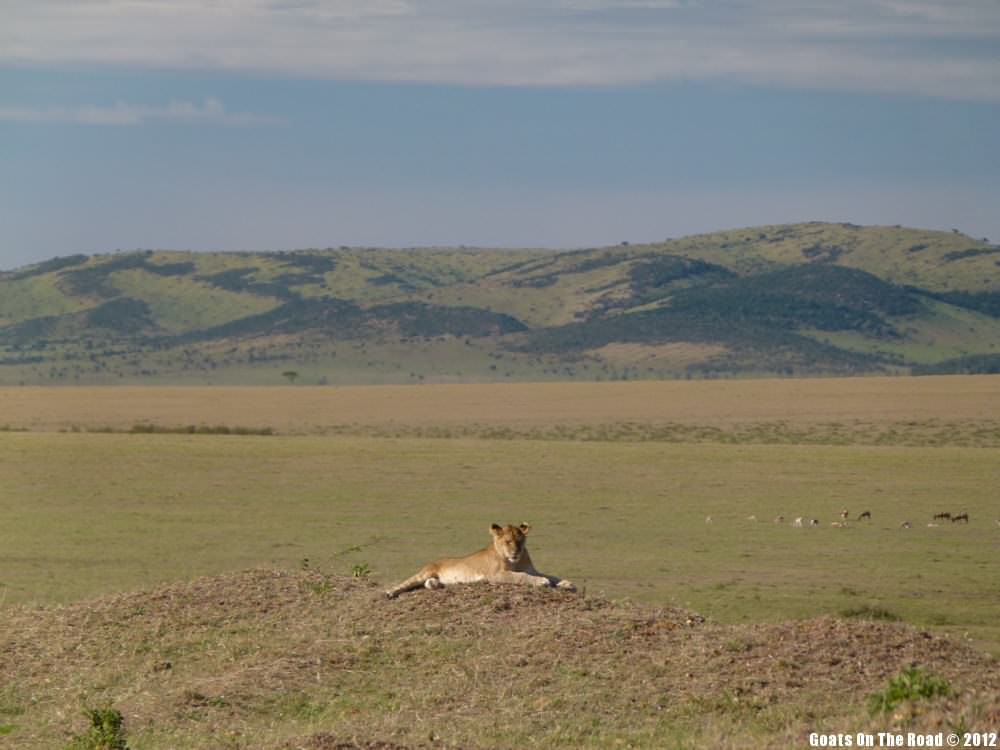
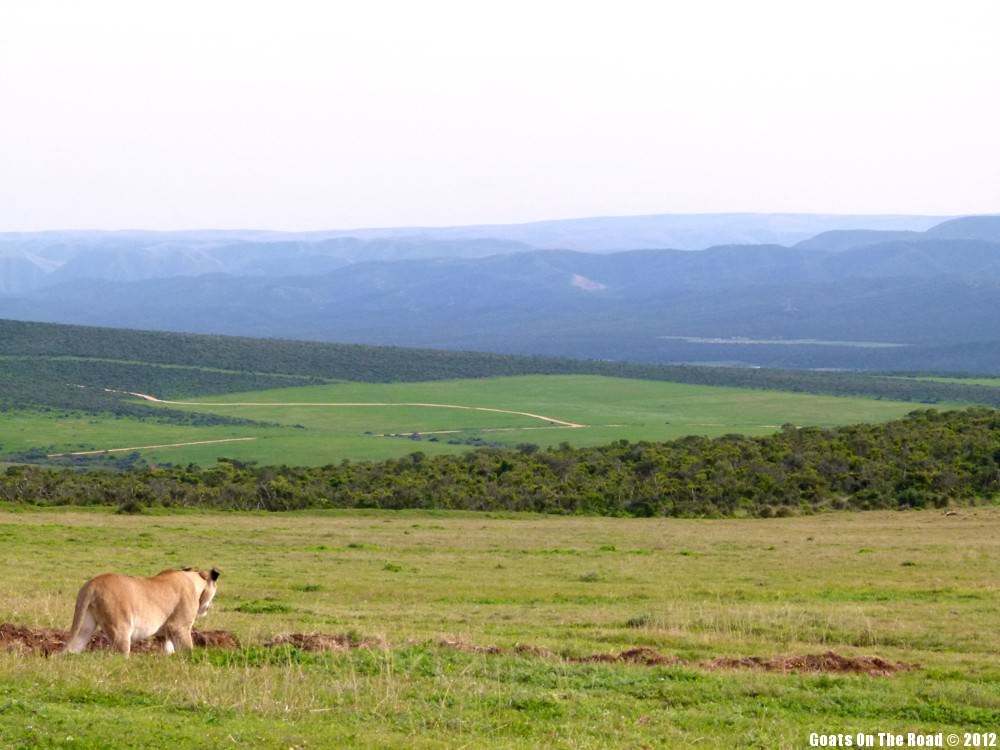



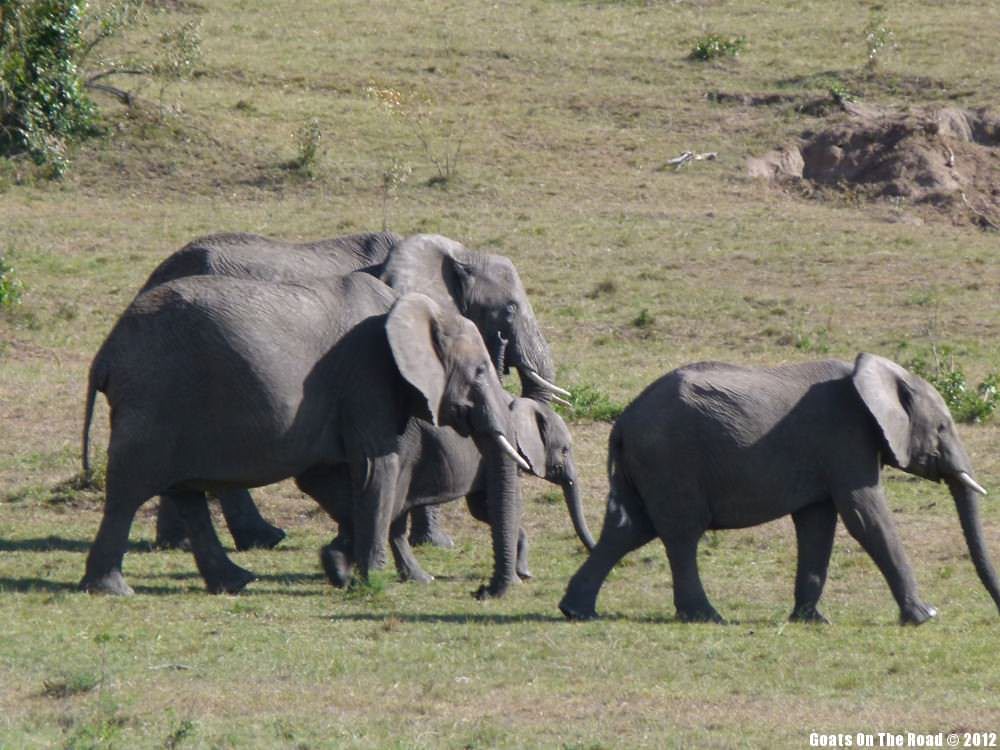



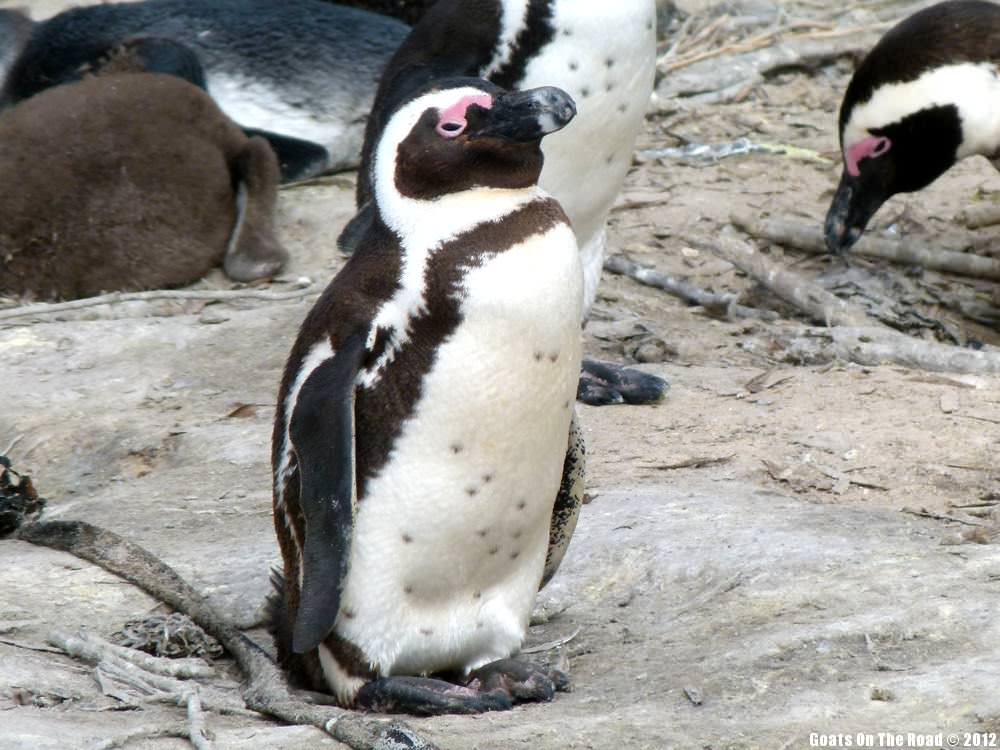


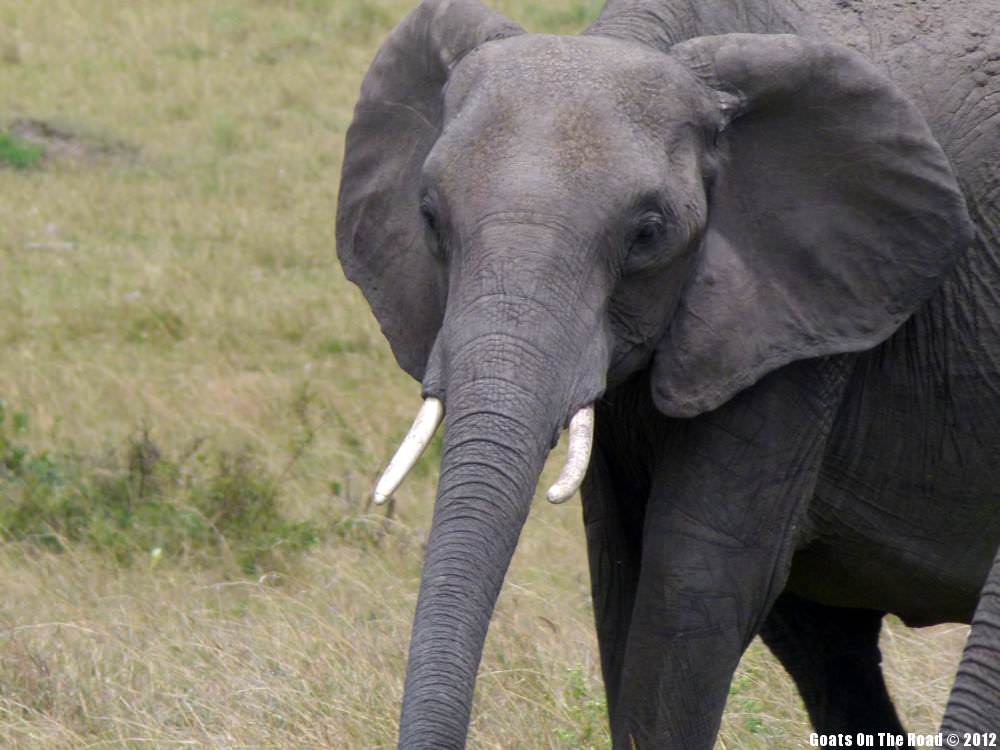
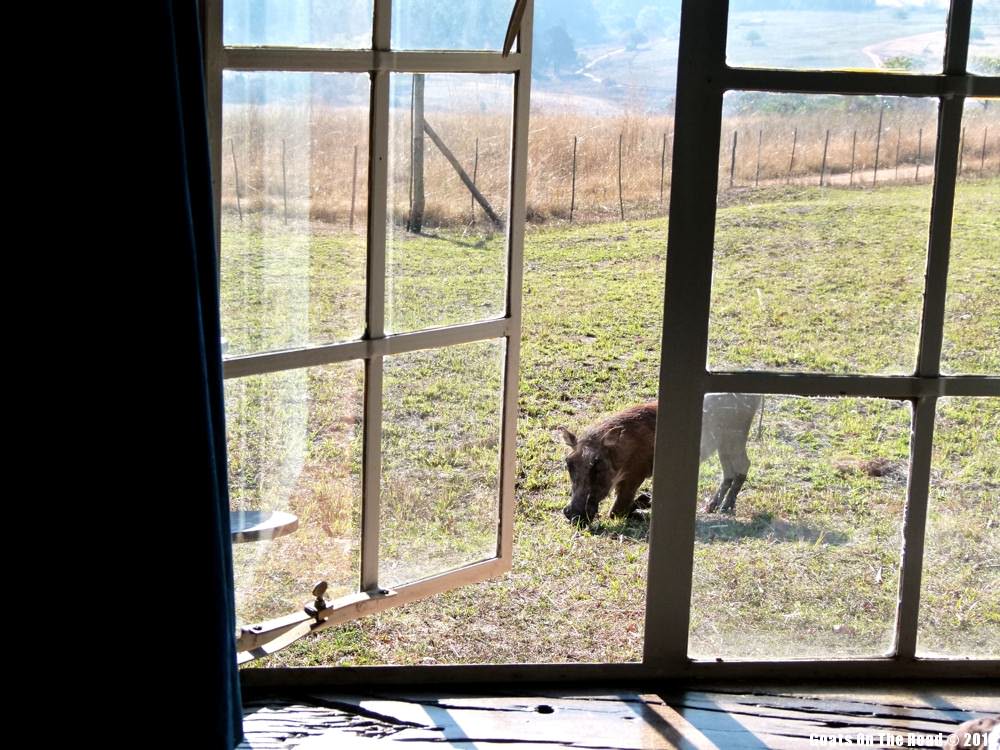

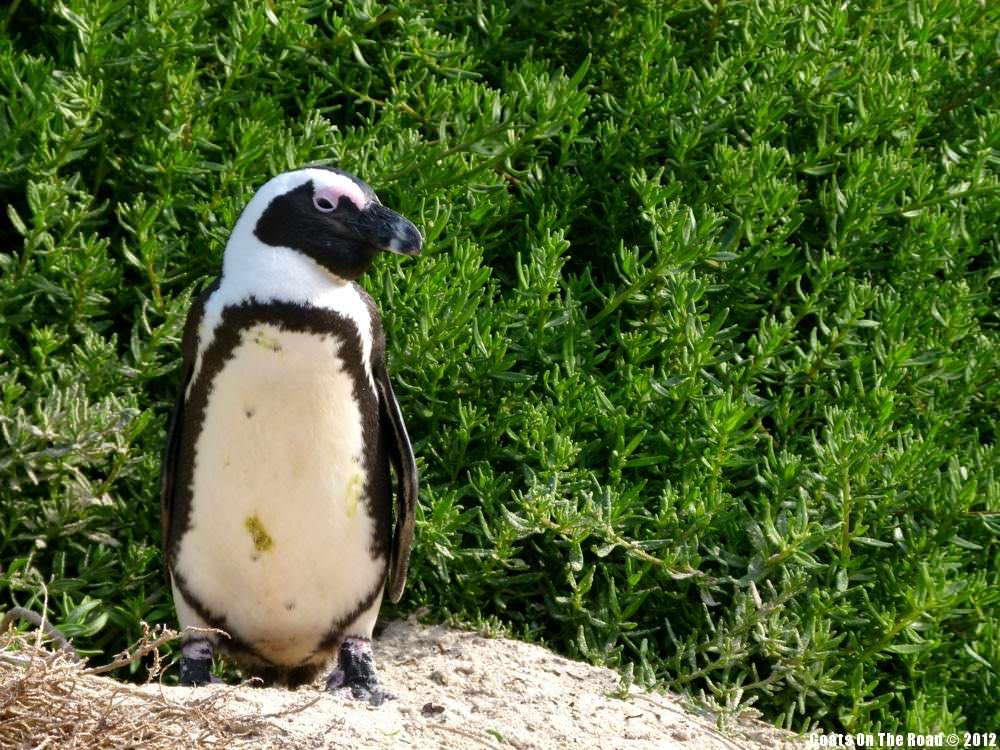


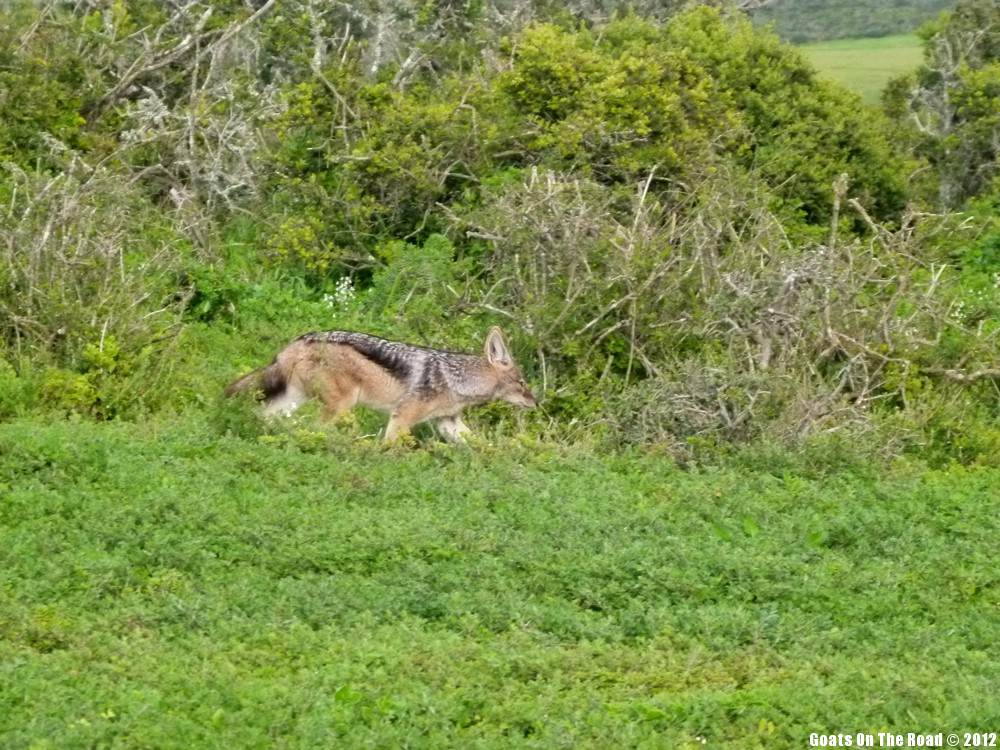

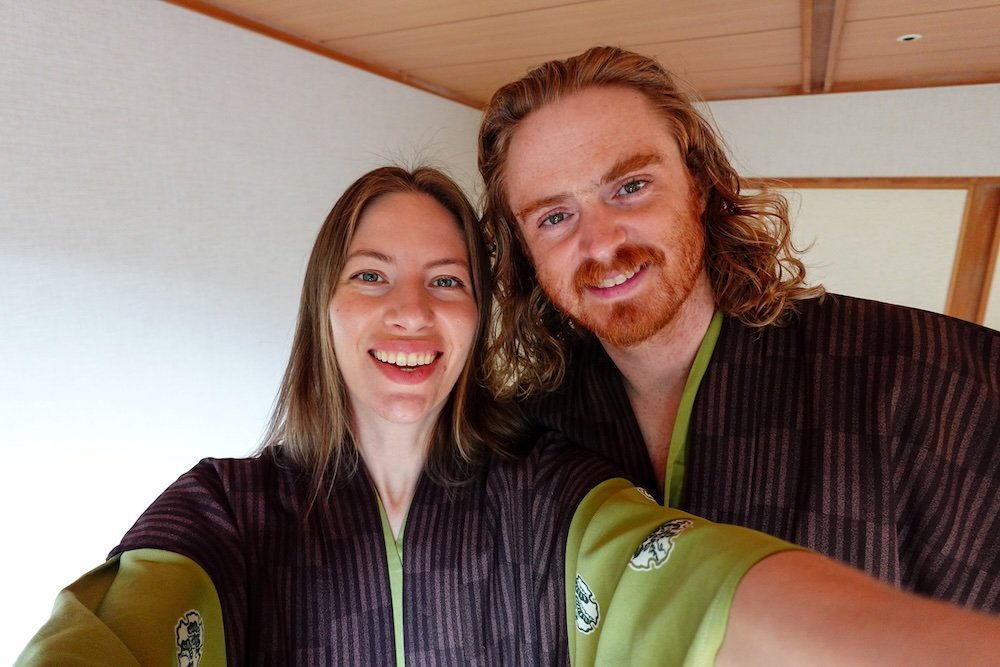


No Mountain Gorillas, No African Safari
You have posted some truly amazing animal images. I truly would have a problem picking a favorite however I really like the lions in “Family Time”. Great job.
Thanks Chris!
Beautiful pictures and needless to say, that I am green with envy for your Safari spotting of all Big 5 and more! We managed 4 whereby I am still confident, that on our Sunset Safari I heard a lion roar! Brought back lots of memories!
That’s great! Nothing beats a good safari 😉
Beautiful pictures and needless to say, that I am green with envy for your Safari spotting of all Big 5 and more! We managed 4 whereby I am still confident, that on our Sunset Safari I heard a lion roar! Brought back lots of memories!
Great photos. We especially like the giraffe.
Thanks Charlie!
Brilliant pictures, I especially like the one penguin…how does it even survive there. When you went on these Safaris did you take go with a guide or just hire a jeep out yourself? I’ve had friend who have gone on a Safari by themselves and said it was far better without the guide.
There are many penguins in South Africa..in fact, they’re called the African Penguin! Not all penguins live in the cold 🙂
We did a major 4 day safari in the Masai Mara in Kenya with a guide, but we also did 3 safaris on our own in South Africa, we drove our car through the parks ourselves and it was amazing!
Thanks for the comment.
Great pictures , some were really too close for comfort , I can see it would be a thrill taking those shots.
Africa is famous for its wildlife safari which attracts a lot of people. You can enjoy best safari by hiring a jeep and can see all animals living in their natural habitat and wilderness. Just want to go to capture these beautiful safari on my own very soon. Thanks Samuel for sharing these amazing photos.
Thanks Peter,
I think it’s a once in a lifetime type of travel activity that is a bucket list item for many travellers 🙂
Thanks Samuel for shearing your views. Your posted photos are truly awesome. I fully agreed with you that in Africa apart from the big fives there are lots of thing to do and see. Thees are great savanna grassland plains, lakes, river. It is the one of the beautiful continent around the globe.
Nice animals in Africa. And… I am for fairtrade travel to Africa!
Thank-you everyone for your comments and compliments on our photos, and a big thank-you to Nomadic Samuel for helping us have our content seen by a wider audience! We love this website and hope to post something else on it soon!
Keep your backpacks packed and safe travels.
That is incredible! You are so up and personal with the animals…great shots. Africa is tops on my bucket list…I am sure I will see the Big 5 – I just hope I can capture them as well as you have here.
I couldn’t agree more; you’re going to miss half of your life if you miss the safari experience. I’d been to Hwange National Park once and I can’t wait to visit again it once more and bring my future kids for them to learn the importance of knowing the animals’ natural habitats. It’s a great list of photos, I’m just feel so sorry about the giraffe, though I know that that’s purely normal.. I still feel sorry for it to be eaten. Hey it’s just me. -_-
Stunning, this is one of my dream photo trips!
Amazing. I really want to do an African safari
It’s on my bucket list as well Sam! 🙂
Fantastic pictures (and like many here, I love the ostrich photo!). Safari in Africa is one ‘must do’ travel experience, if only to remind ourselves we are not top of the food chain! There are some excellent tour operators and parks across Africa – just beware of some game hunting reserves/projects passing themselves off as natural parks or conservation projects. Real wildlife experiences mean not inferring with animals’ spaces, territories and day-to-day behaviour, and tour operators who respect that are the ones worth finding!
These are stunning photos, thanks for sharing!! I am so itching to get to Africa and this only fed the fire 🙂
Thanks Kate! Feel exactly the same way you do 🙂
What stunning captures!! The whole jungle has been brough alive!!
Thanks Sam for hosting Nick and Dariece 🙂
Thanks Arti, I really appreciate Nick and Dariece for sharing 🙂
This is excellent photography. You got really close. I think I like the lost giraffe best.
Wow, these are amazing photos. You guys really seem to have seen it all! Great pic of the dung beetle!
Some truly awesome shots here! Have to agree with Shaun and say that the ostrich silhouette one is my favorite!
That’s one of my favourite shots as well 🙂
Great photos. I miss Africa; it was such a luxury to live there and have safari parks more or less on the doorstep. ‘Curious cub’ is my favourite, there must be so many thoughts going through that little one’s mind.
Wow! This is incredibly beautiful set!
‘Too Close For Comfort’ is my favorite. Can’t believe that you can get that close… I guess it is time for me to go to Africa 🙂
I’m feeling the urge to go soon as well! 🙂
LOVE all of these photos! I still have not made it to South Africa, despite having quite a bit of family in Joburg. Hopefully soon!
Koren, I’m hoping to visit for the first time soon as well! 🙂
Great pictures, especially the ostrich one!
Nick & Dariece, Thanks for sharing these spectacular pics of Wildlife. For a second I thought like I am watching Discovery wildlife’s show. It would be so unique to see those lions much nearer the camera lens.